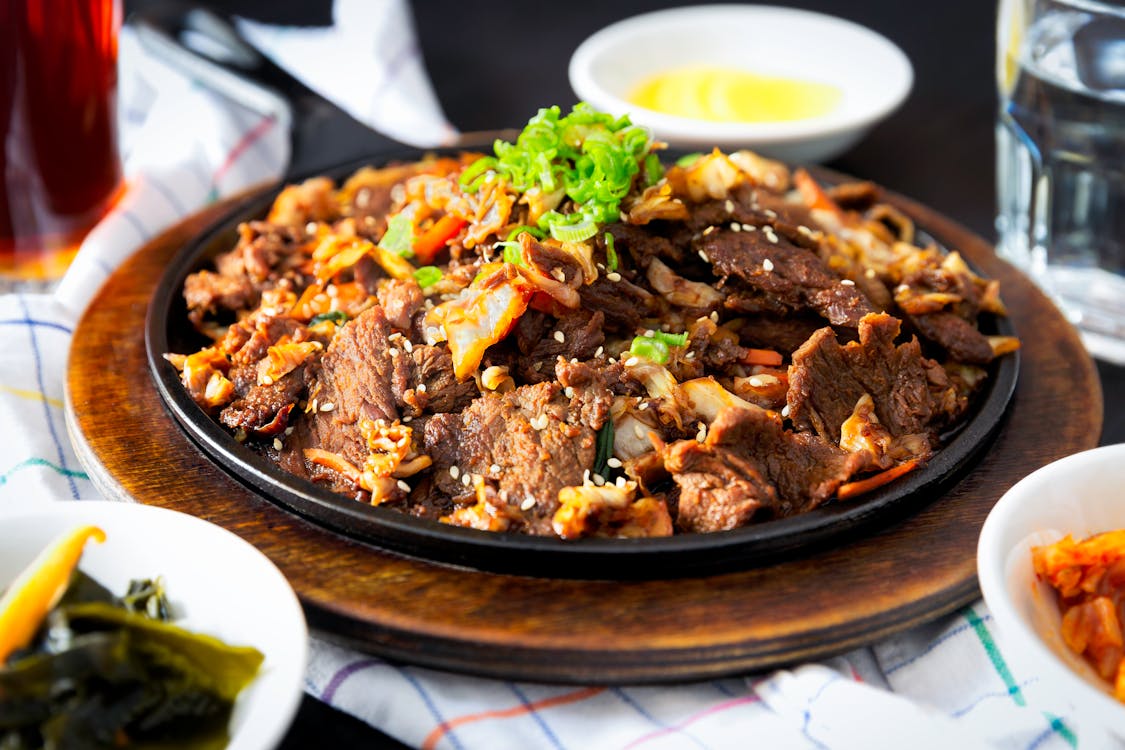🍜Korean Level 3, Activity 13: 무엇을 먹고싶어요?/ What Would you Like to Eat?

Description:
Students will discuss their food preferences and choose a restaurant and a menu based on their preferences. They will learn how to make a Korean dish and which ingredients are needed. They will be able to explain it to the classmates at the end.
Semantic Topics:
Dish(접시), Food(음식), Menu(메뉴), Preferences(선호), Recipe(요리법), Restaurant(식당)
World-Readiness Standards:
- Students express their likes and dislikes regarding various objects, topics, people, and events in their daily environment.
- Students understand and demonstrate culturally appropriate Korean table manners (e.g., appropriately using spoons and chopsticks, waiting until elders begin eating).
- Students compare and contrast the uses and functions of public facilities and services in Korea with their own culture (e.g., public transportation, market, hospitals, postal and delivery services).
Idaho Content Standards for World Languages:
- COMM 1: Interact with others in the target language and gain meaning from interactions in the target language.
- CLTR 1.1 Analyze the cultural practices/patterns of behavior accepted as the societal norm in the target culture.
- COMP 1: Investigate, explain, and reflect on the nature of language through comparisons of the language studied.
NCSSFL-ACTFL Can-Do Statements:
- I can state multi-step instructions for completing a process, such as preparing a recipe.
- I can work with a partner to determine what to order at a restaurant.
- I can interact with others to ask for restaurant recommendations.
Materials Needed:
Warm-Up:
Begin by introducing the Can-Dos for today’s activity.
오늘의 학습목표를 소개하는 것으로 수업을 시작하세요.
First, ask the students. 먼저 학생들에게 질문하세요.
- How do I order food in Korea?
- 한국에서는 음식 주문을 어떻게 하나요?
- How do I order food in the United States?
- 미국에서는 음식 주문을 어떻게 하나요?
Main Activity:
1. Half of the students will receive question cards, and the other half will receive the answer and recipe cards.
학생들의 반은 질문 카드를 받고, 나머지 반은 요리법 카드를 받고 대답합니다.
2. The student with a question card will ask questions on the cards to their partner.
질문 카드를 받은 학생은 짝에게 카드에 있는 질문을 합니다.
- What ingredients do you need to make bulgogi?
- 불고기를 만들기 위해 어떤 재료가 필요합니까?
3. Students who have cards with recipes and ingredients will explain how to make certain Korean dishes to their partners.
요리법과 재료가 써진 카드를 가진 학생은 한국 요리를 어떻게 만드는지 짝에게 설명합니다.
- To make bulgogi, you need beef, soy sauce, salt, onions, and so on.
- 불고기를 만들기 위해서는 소고기, 간장, 소금, 양파 등이 필요해요.
- To make bulgogi, mix the beef first with seasoning and fry with vegetables.
- 불고기를 만들려면 먼저 소고기를 양념에 버무린 후 야채와 함께 볶아주세요.
4. Switch the cards and partners. After switching, students will have the questions if they had recipes and ingredients before, and students who had recipes and ingredients will have the question cards.
카드와 파트너를 바꾸세요. 이전에 요리법과 재료를 가지고 있던 학생들은 질문 카드를 받습니다.
5. Repeat steps.
이 과정을 반복하세요.
Wrap-Up:
Ask the following question to finish the grant:
- What Korean dish do you want to make? Have you tried making a Korean dish before?
- 어떤 한국 요리를 만들고 싶습니까? 전에 한국 요리를 만들어 본 적이 있습니까?
End of activity:
- Read Can-Do statements once more and have students evaluate their confidence.
- (Use thumbs up/thumbs down or download our student cards.)
- Encourage students to be honest in their self-evaluation.
- Pay attention, and try to use feedback for future labs
NCSSFL-ACTFL Can-Do Statements:
- I can state multi-step instructions for completing a process, such as preparing a recipe.
- I can work with a partner to determine what to order at a restaurant.
- I can interact with others to ask for restaurant recommendations.

